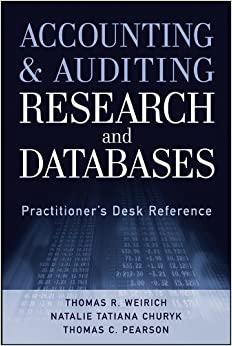Answered step by step
Verified Expert Solution
Question
1 Approved Answer
There can't be many to many relationships in the final ER diagram so they must be changed to multiple one-to-many relations. please add all the

There can't be many to many relationships in the final ER diagram so they must be changed to multiple one-to-many relations. please add all the necessary entities attributes cardinality and relationships
Draw an ERD Problem Description: We are going to design a database that works as a repository of the questions for courses offered at university. Using this repository, we would like to analyze if the learning objectives of the courses have been met. The following shows the business rule. At university, professors teach a variety of courses. Based on the nature of the course, each professor chooses a different combination of assessment types. The assessment type include exams (i.e., midterm(s) and final), projects, assignments, quizzes, in-class activities, surveys, presentations and so on. Each professor may use a combination of assessments for each course that they teach. For example, for a course such as "introduction to database systems", in-class activities, written exams, projects and presentation are means of assessing students, however, no popup quiz is used in this course. For a course such as "Human Computer Interaction", however, no exam is given, instead students work on a group project and present their design at the end of the semester. To each assessment a weight is assigned by the professors. For example, one assignment may have 10% while another holds 15% of the total grade. Some assessments have more than one question, and therefore each question has its own points. We would also like to store a sample solution for some of the assessments. For example, it does not make sense to have a sample solution for a presentation, but for a written exam it is possible . Every question in an assessment covers a learning objective. The learning objectives are classified into six levels including Knowledge, Comprehension, application, analysis, synthesis, and evaluation. For example, a question that is given in an exam may evaluate students' knowledge about a certain topic, while another assesses the application of that knowledge to solve a problem. Each six categories of learning objectives are further categorized to up to 10 subcategories. These subcategories are called Graduate Attribute Indicators (GAI). For example, 6GAl are assigned to analysis, while 10GAl are defined for synthesis. It is important for professors to ensure that they assess students comprehensively such that all the GAls are covered by at least one question/ assessment and all the learning outcomes are tested by two questions during the term. With the queries that we make on this repository, we should be able to answer several questions such as - What percentage of students passed a specific course. What percentage of the assessment for course X, meets the first learning outcome. - What types of assessments have been offered by course X in a specific year and term. - etc., etc., etc. Hint: - Although a course may be thought by many professors, but the type of assessments that they use may not be the same. - A professor teaches at least one course. - A course is only offered, if at least two professors are eligible to teach it. - For every assessment stored in the database, we should be able to identify to which year, term and course it belongs. - One assessment or question can cover only one learning outcome or GAI. - While the maximum cardinality is important, you should use your best judgment for the minimum cardinality, when it is not explicitly mentioned in the textStep by Step Solution
There are 3 Steps involved in it
Step: 1

Get Instant Access to Expert-Tailored Solutions
See step-by-step solutions with expert insights and AI powered tools for academic success
Step: 2

Step: 3

Ace Your Homework with AI
Get the answers you need in no time with our AI-driven, step-by-step assistance
Get Started


